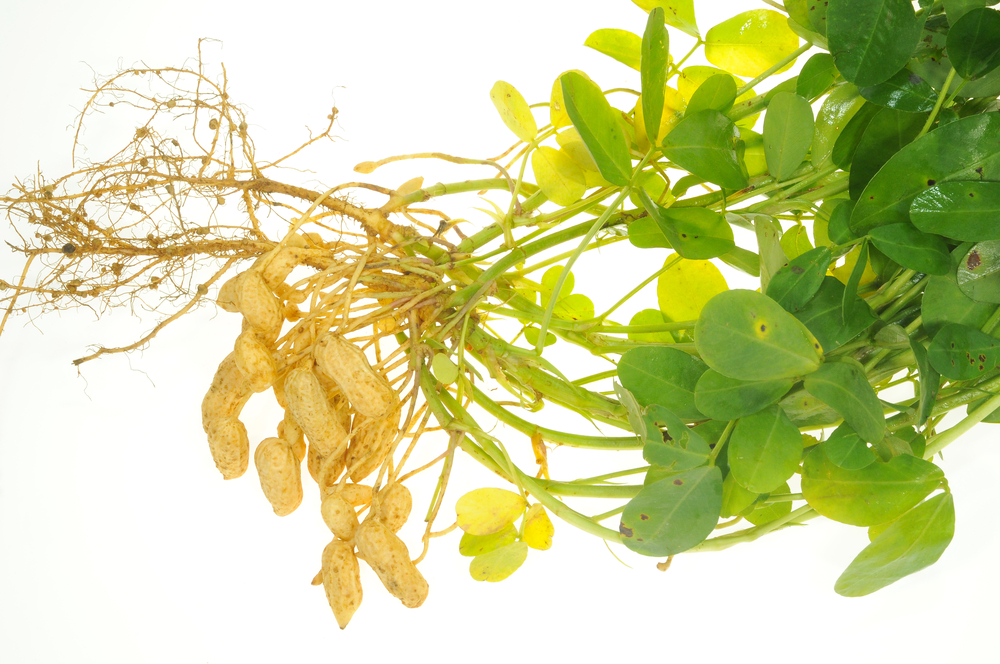How Do Peanuts Grow?

Peanuts do not grow on trees.
Despite their name and appearance, peanuts are not tree nuts like walnuts and pecans — they're part of the legume family of plants, which includes beans, lentils, peas and other familiar foods.
When planted, peanut seeds (kernels) grow into small, 18-inch plants with oval-shaped leaves. The peanut plant appears unremarkable at first glance, but unlike most other plants, its flowers bloom above ground, while its fruits (peanuts) develop below ground.
To start, the small yellow flowers grow around the lower portion of the plant, and only last for about a day. After self-pollination, the flowers lose their petals, as the fertilized ovaries in the center of the flowers begin to enlarge.
The plant's pedicels — stalks connecting to the ovaries — curve downward, pointing the budding ovaries toward the ground. Cells at the base of the ovaries divide and eventually form shootlike "pegs." The pegs, with the new peanut embryos at their tips, extend into the ground.
Now embedded in the ground, the pegs turn horizontal (parallel to the soil surface) and mature. The tip of the peg takes in water and nutrients, and swells to form a single, wrinkled shell that contains two to four peanuts.
Over its lifetime, the peanut plant will produce about 40 peanut pods before dying.
Sign up for the Live Science daily newsletter now
Get the world’s most fascinating discoveries delivered straight to your inbox.
Follow Joseph Castro on Twitter. Follow us @livescience, Facebook & Google+.











